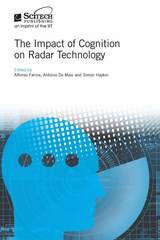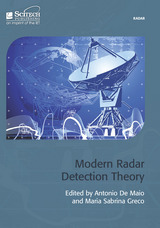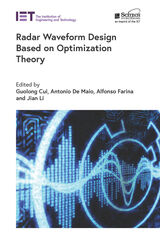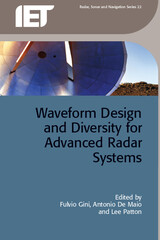5 books about De Maio, Antonio

The Impact of Cognition on Radar Technology
Alfonso Farina
The Institution of Engineering and Technology, 2018
Cognitive dynamic systems are inspired by the computational capability of the brain and the viewpoint that cognition is a supreme form of computation. The key idea behind this new paradigm is to mimic the human brain as well as that of other mammals with echolocation capabilities which continuously learn and react to stimulations according to four basic processes: perception-action cycle, memory, attention, and intelligence.
[more]

Modern Radar Detection Theory
Antonio De Maio
The Institution of Engineering and Technology, 2016
Recently, various algorithms for radar signal detection that rely heavily upon complicated processing and/or antenna architectures have been the subject of much interest. These techniques owe their genesis to several factors. One is revolutionary technological advances in high-speed signal processing hardware and digital array radar technology. Another is the stress on requirements often imposed by defence applications in areas such as airborne early warning and homeland security.
[more]

Polarimetric Radar Signal Processing
Augusto Aubry
The Institution of Engineering and Technology, 2022
Polarimetric Radar Signal Processing provides an overview of advanced techniques and technologies developed for polarimetric radars to meet challenging performance requirements. It aims to cover some of the most challenging application fields, including: target detection for active and passive surveillance systems, interference suppression, detection of temporal changes in a given scene, environment classification, automatic target recognition, non-cooperative target imaging, polarimetric coding in radar and SAR systems, pol-SAR ambiguities suppression, space-debris detection, tracking, and classification, estimation of biological and behavioural parameters of insects, precipitations localization as well as type and motion parameters estimation via real-life practical polarimetric weather radar.
[more]

Radar Waveform Design based on Optimization Theory
Guolong Cui
The Institution of Engineering and Technology, 2020
This book provides an overview of radar waveform synthesis obtained as the result of computational optimization processes and covers the most challenging application fields. The book balances a practical point of view with a rigorous mathematical approach corroborated with a wealth of numerical study cases and some real experiments. Additionally, the book has a cross-disciplinary approach because it exploits cross-fertilization with the recent research and discoveries in optimization theory. The material of the book is organized into ten chapters, each one completed with a comprehensive list of references.
[more]

Waveform Design and Diversity for Advanced Radar Systems
Fulvio Gini
The Institution of Engineering and Technology, 2012
The phrase 'waveform design and diversity' refers to an area of radar research that focuses on novel transmission strategies as a way to improve performance in a variety of civil, defense and homeland security applications. Three basic principles are at the core of waveform diversity. First is the principle that any and all knowledge of the operational environment should be exploited in system design and operation. Second is the principle of the fully adaptive system, that is, that the system should respond to dynamic environmental conditions. Third is the principle of measurement diversity as a way to increase system robustness and expand the design trade space. Waveform design and diversity concepts can be found dating back to the mid-twentieth century. However, it has only been in the past decade or so, as academics and practitioners have rushed to exploit recent advances in radar hardware component technology, such as arbitrary waveform generation and linear power amplification, that waveform diversity has become a distinct area of research. The purpose of this book is to survey this burgeoning field in a way that brings together the diverse yet complementary topics that comprise it. The topics covered range from the purely theoretical to the applied, and the treatment of these topics ranges from tutorial explanation to forward-looking research discussions. The topics treated in this book include: classical waveform design and its extensions through information theory, multiple-input multiple-output systems, and the bio-inspired sensing perspective; the exploration of measurement diversity through distributed radar systems, in both cooperative and non-cooperative configurations; the optimal adaptation of the transmit waveform for target detection, tracking, and identification; and more. This representative cross-section of topics provides the reader with a chance to see the three principles of waveform diversity at work, and will hopefully point the way to further advances in this exciting area of research.
[more]
READERS
Browse our collection.
PUBLISHERS
See BiblioVault's publisher services.
STUDENT SERVICES
Files for college accessibility offices.
UChicago Accessibility Resources
home | accessibility | search | about | contact us
BiblioVault ® 2001 - 2025
The University of Chicago Press









